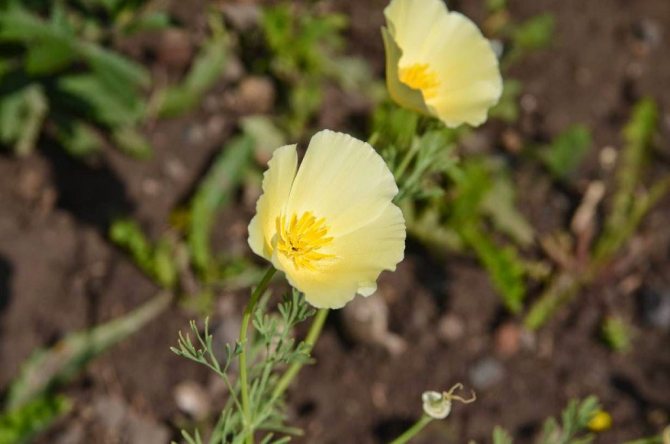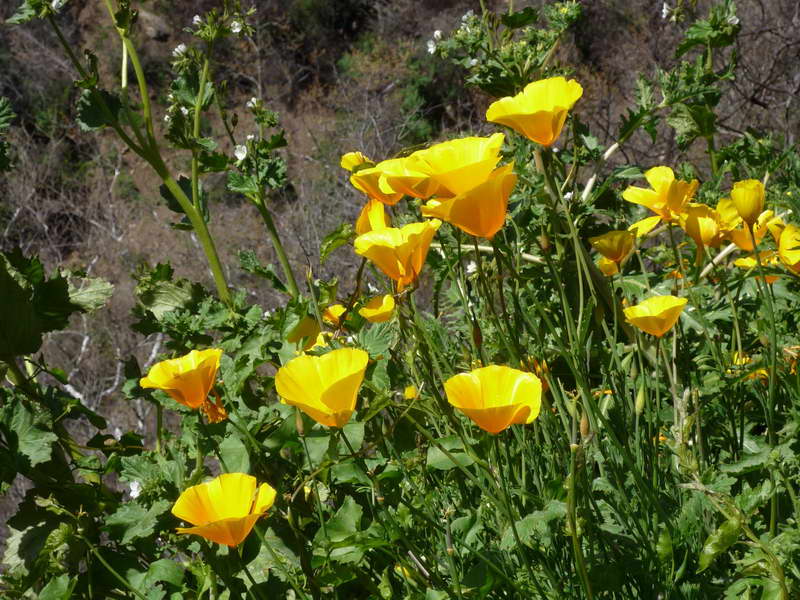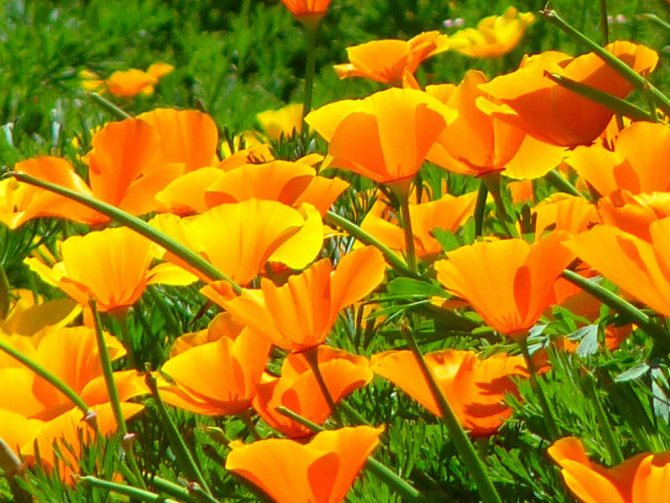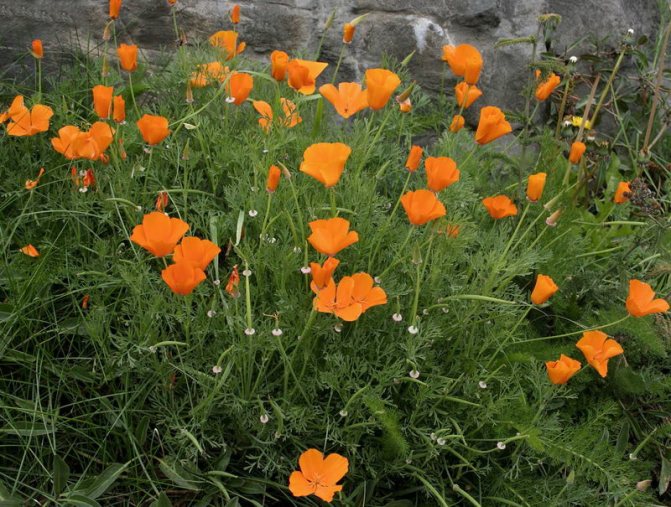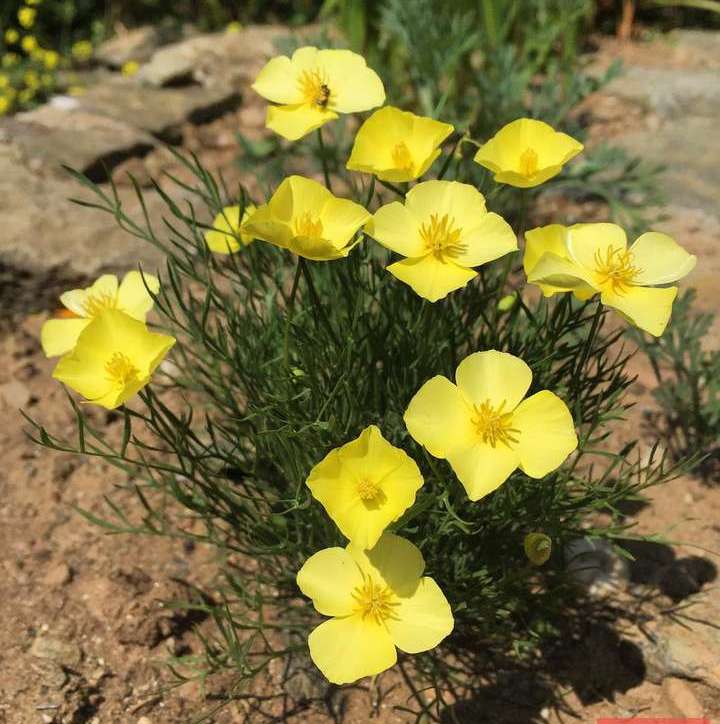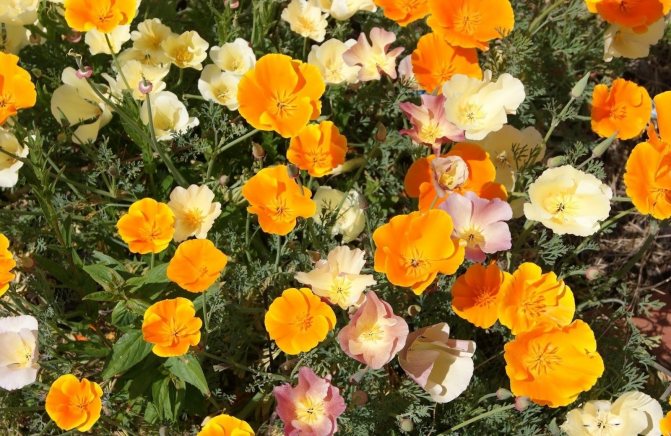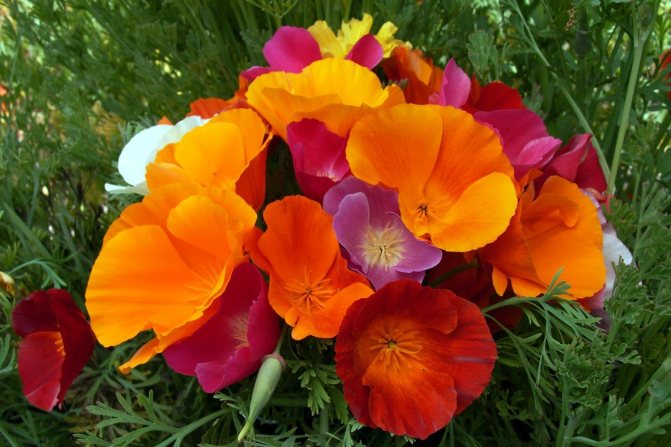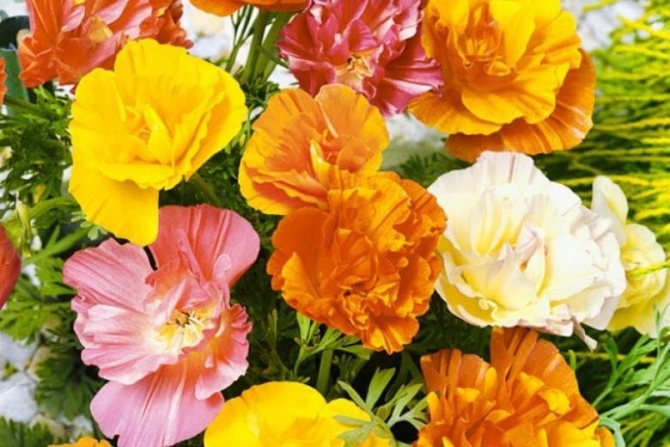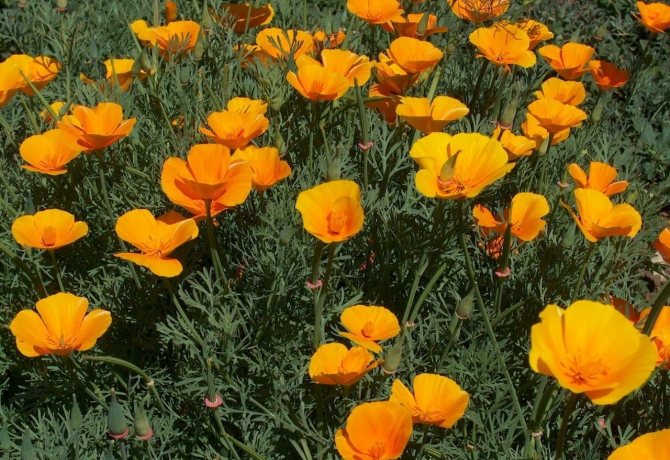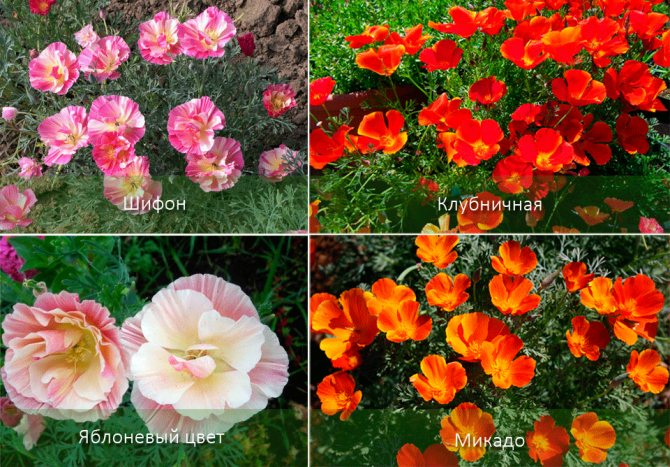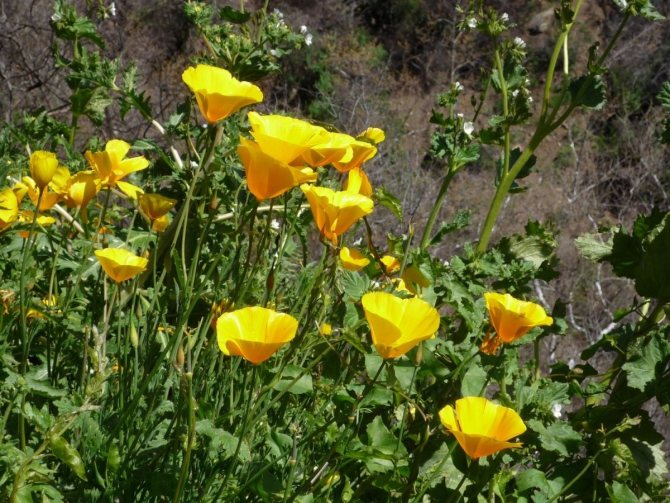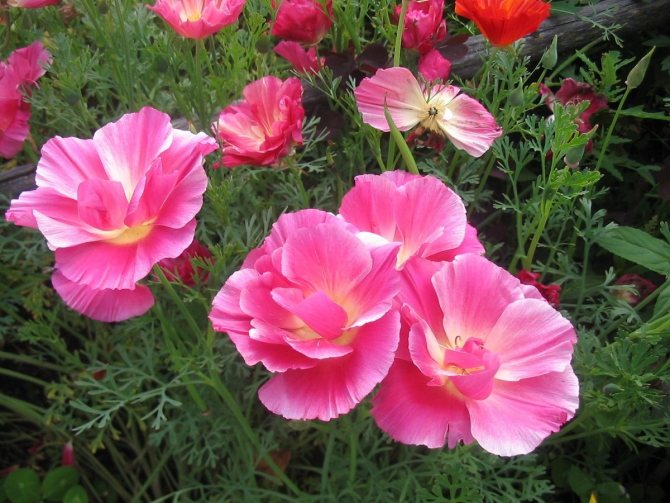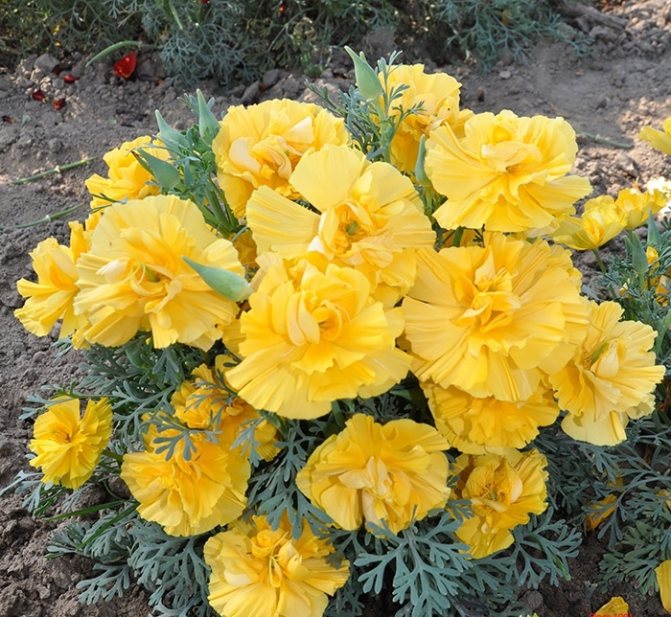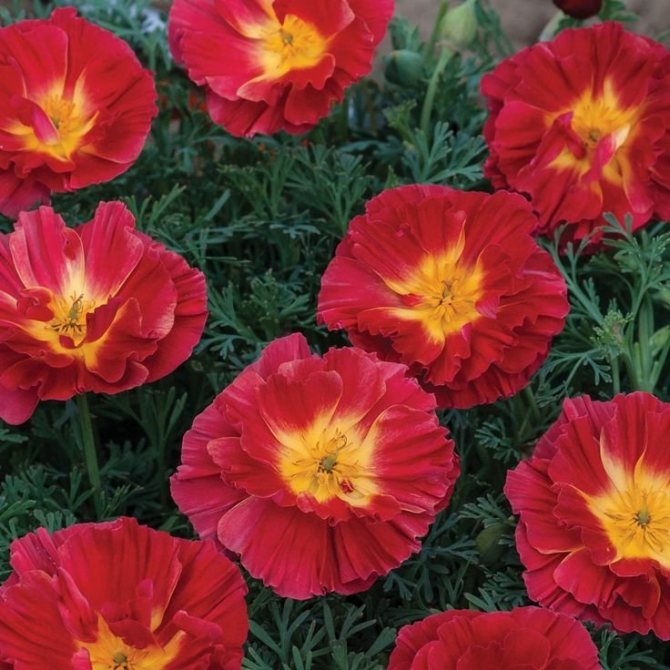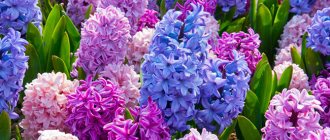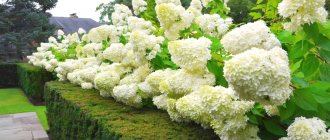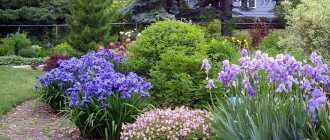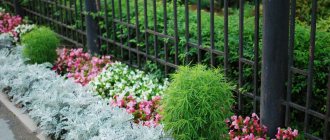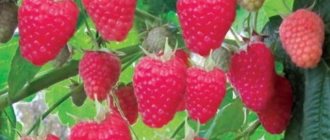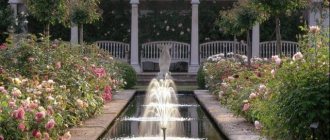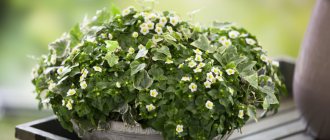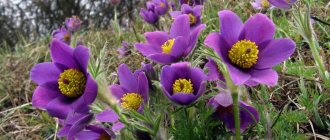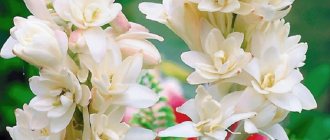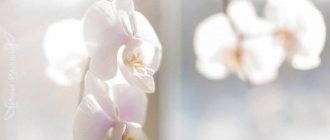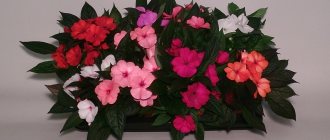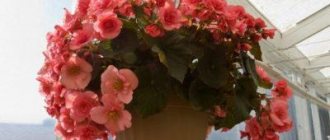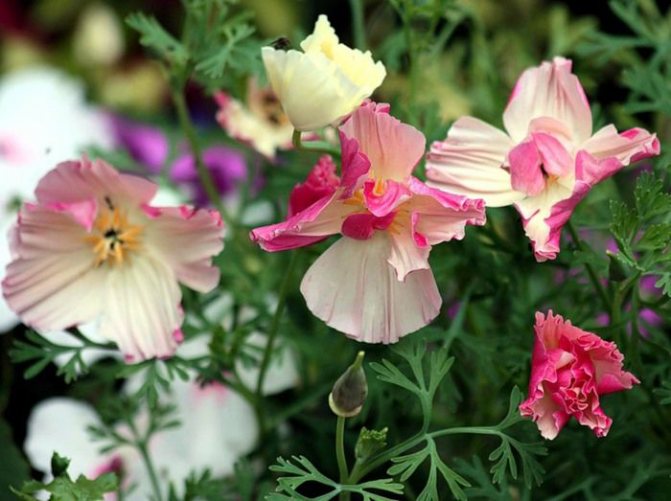
Escholzia is a beautiful flower that does not require special care
Eshsholzia is a field-type plant, unpretentious to care for. If you want to create a small paradise in the house and in the garden, you can safely deal with the seedlings of this flower.
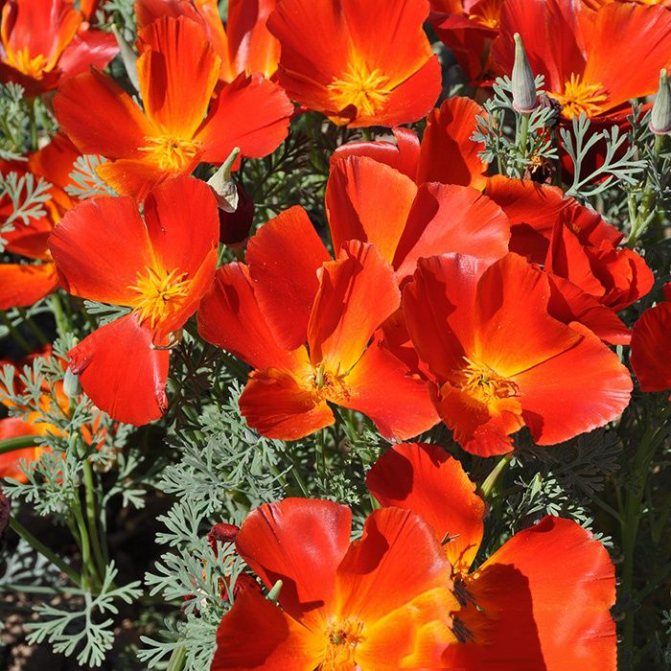

The petals of this flower are like butterflies.
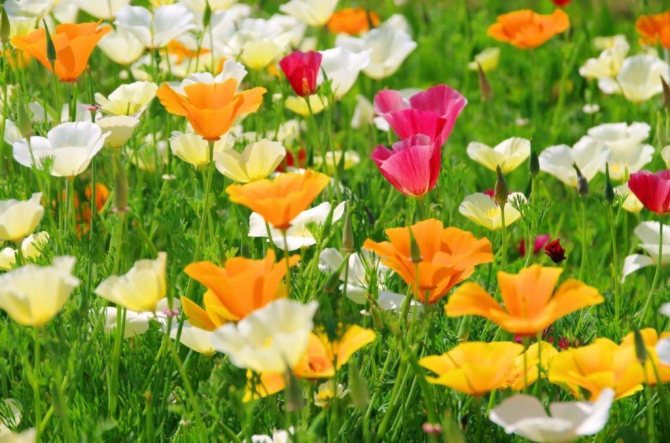

Fruit Blast will bring your home flower bed to life
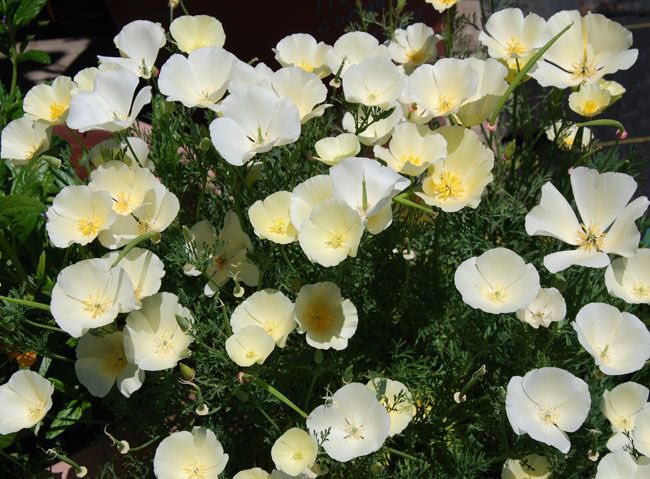

Creamy shades of delicate escholzia petals
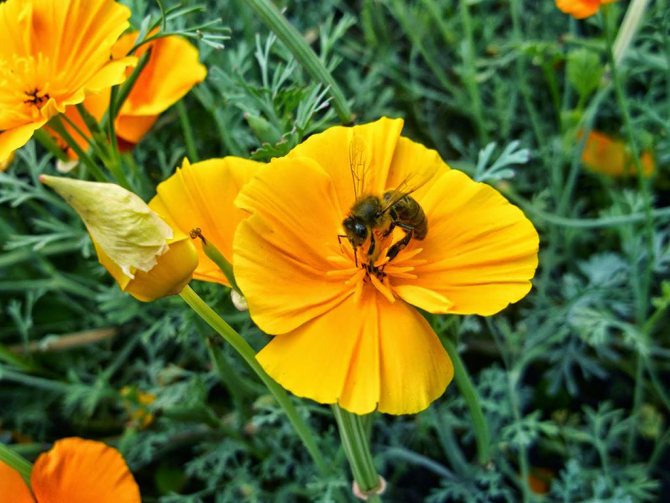

A sunny flower creates the mood of the entire flower bed
This culture, which has such a strange name, is an unpretentious flower. There are whole large fields to be occupied with it. The appearance of blossoming flowers deserves delight, there is even a whole legend according to which the petals turn into gold, while the earth is filled with the seeds of this metal. Eschsholzia, whose photos are presented in a wide variety, can be grown within the framework of the home, for this it is necessary to provide her with competent care.
1
3
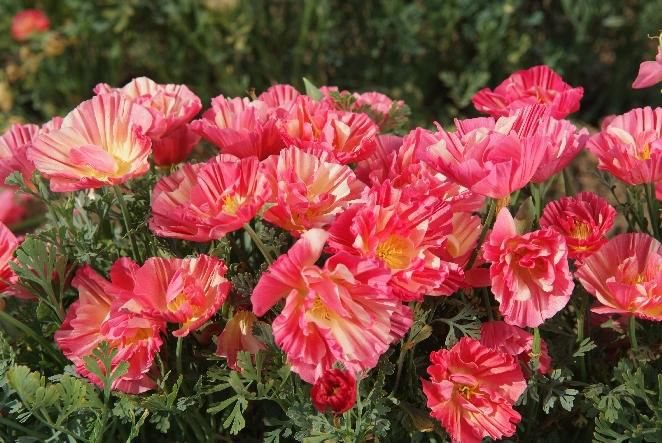

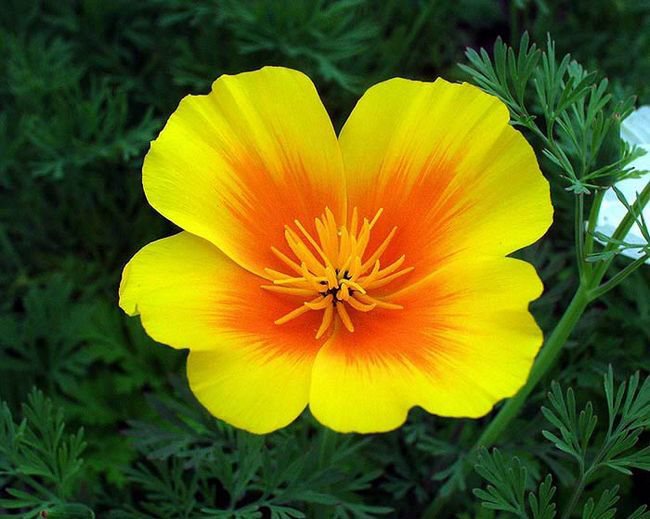

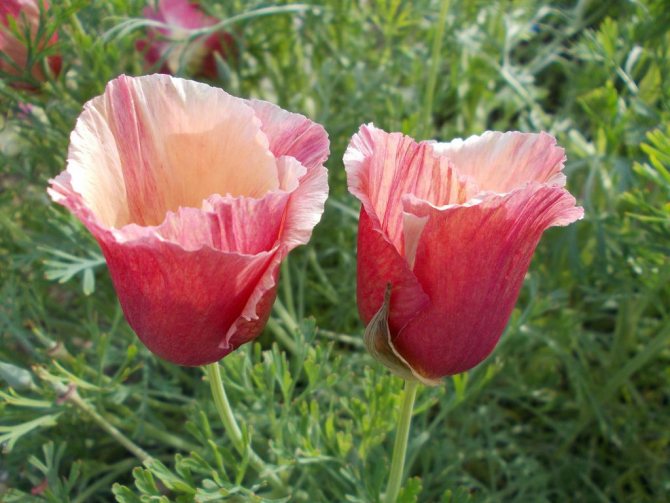

Description of the flower
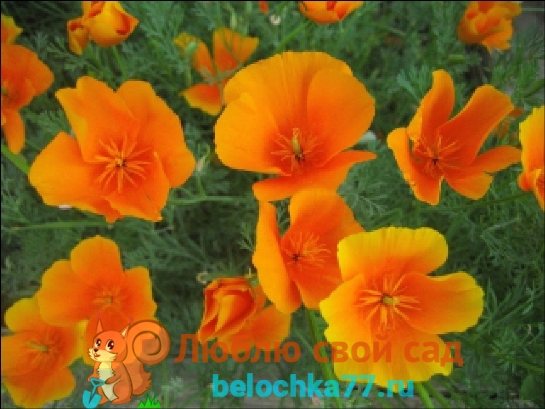

Escholzia, or California poppy, is an annual plant that looks organically in flower beds or flower beds in combination with wildflowers.
Poppy is a thermophilic plant that prefers sunlit places. It has compact herbaceous stems creeping along the ground, up to 40 cm high.
Openwork, carved leaves are covered with a gray waxy bloom. Their shape resembles leaves of wormwood - another name for the "wormwood" escholzia. Flowers up to 8 cm in size can be simple and double. In California, they adorn the state coat of arms. The color of the corollas is bright and very varied. The buds open en masse only on a sunny day, adding color to the flower garden.
The use of escholzia is universal - rockeries, lawns, balcony boxes and containers, Moorish lawn, curbs, ridges.
Flowering lasts from June until frost. The buds open every morning, but remain closed in cloudy weather and at night.
general information
Escholzia is grown by gardeners and avid summer residents all over the world. This herbaceous annual plant with carved leaves is similar in appearance to wormwood. The flowers of the varieties can be yellow. Also, successful botanists have bred beige and peach flowers with double petals. In nature itself, Aescholzia grows in North American fields and meadows, usually occupying barren lands. Plant propagation occurs by self-sowing.
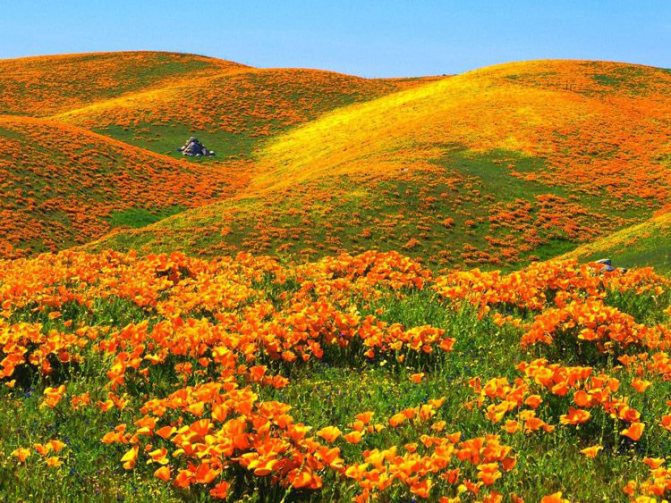

The field annual flower can be applied in the home landscape
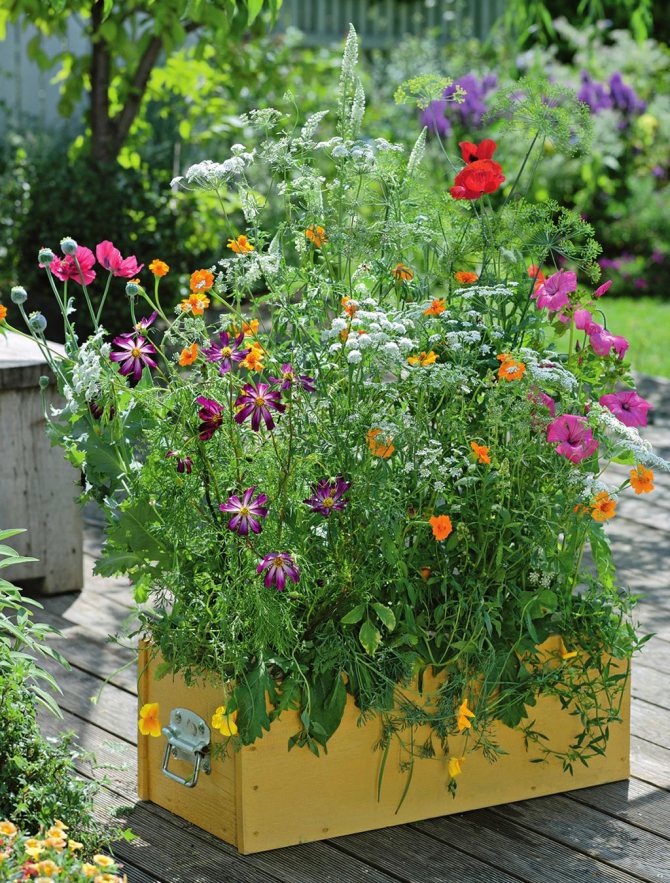

Arrangement of wildflowers at home
The flower is perennial if the temperature regime in the cool season is positive or is 0 ° C. The culture blooms at the very beginning of summer and blooms until the autumn cold comes. In structure, the plant is a close relative of the poppy, since its leaves contain medicinal substances. The seeds can be eaten, and the pollen is intended for use in cosmetology. The Indians, who are the original inhabitants of these regions, have used such poppy in medicine from time immemorial.
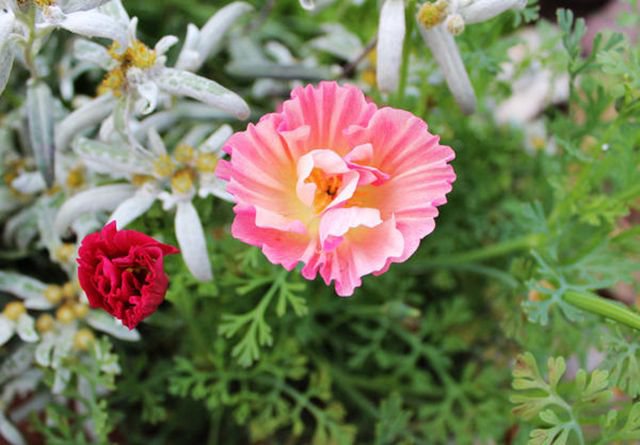

Escholzia variety "apple blossom" with exquisite carved petals


A light-loving plant will decorate any flower bed
Types and varieties with photos
In the European part of Russia, the most common Sod Echscholzia (Eschscholzia caespitosa) and Californian Echscholzia (Eschscholzia californica).
The flowers on these plants are most often bright yellow or orange. Through the efforts of breeders, the palette has been enriched with colors from white to carmine red, including cream and two-tone.
Eschscholzia californica - Eschscholzia californica
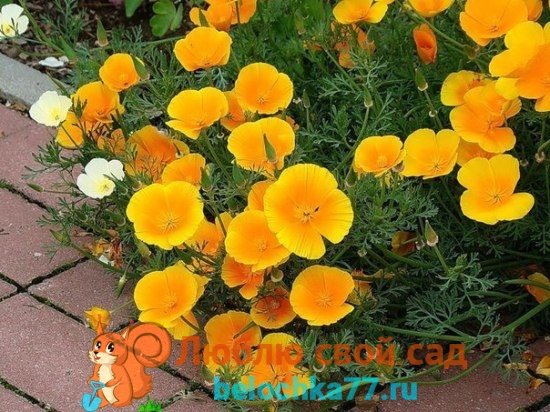

The most common type. For its resemblance to the wild-growing poppy, it received the name "Californian poppy". Annual, branching herb, creeping shrub up to 40 cm tall. Multiple, ribbed greenish-gray shoots are straight and slender. Leaves cut three times; cup-shaped single flowers open up to 9 cm in diameter. The color of the corolla can vary from white to carmine; there are varieties with yellow, orange, cream petals. Flowers form from mid-May until frost.
Eschscholzia turfy - Eschscholzia caespitosa
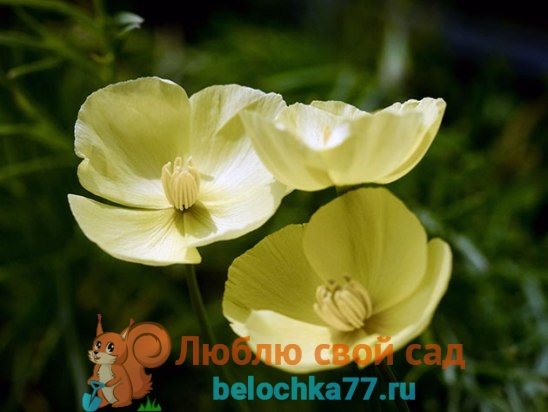

A very graceful herbaceous annual. It does not grow above 15 cm. On a delicate gray-green openwork rosette, many flowers grow in a rich yellow color. Flowering lasts from June until frost. Bred varieties with bright pink corollas, double and corrugated.
Mikado
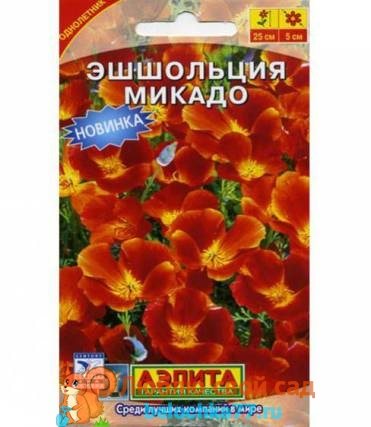

Intense red petals form a simple inflorescence with a darker middle
Apple tree flowers
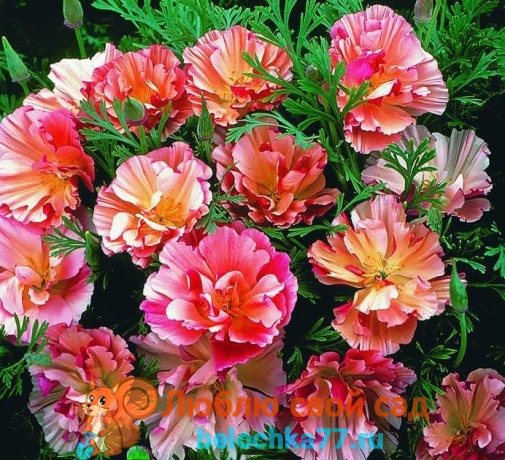

Large double or simple flowers are painted in a pale pink color. Can withstand light frosts.
Strawberry fields
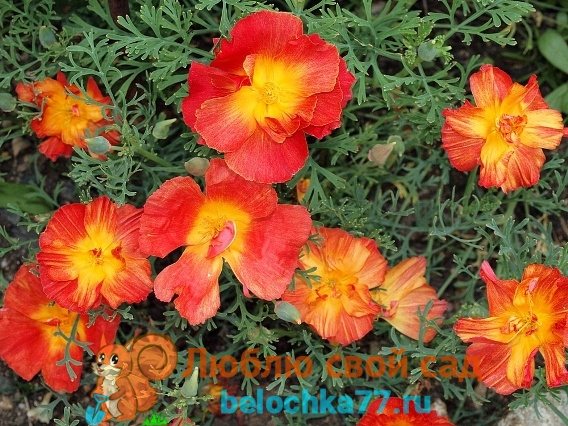

In semi-double flowers, the bright yellow center gradually turns into red at the edges of the petals. A semi-double flower contains from 6 to 9 petals.
Golden glory
Simple bright yellow flowers with an orange center.
Peach ice cream (Pearh sorbet)
Luxurious, pale pink double flowers appear in abundance on the bush until mid-autumn.
Karminkoenig
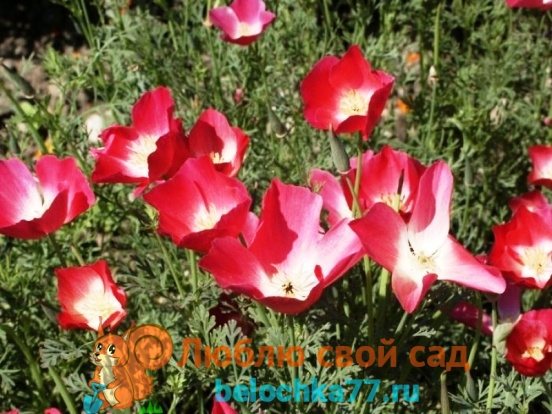

Large, rich pomegranate simple flowers, especially bright against the background of the white center.
Orange king
Orange-golden inflorescences can bloom as simple and semi-double and even double flowers.
Apricot chiffon
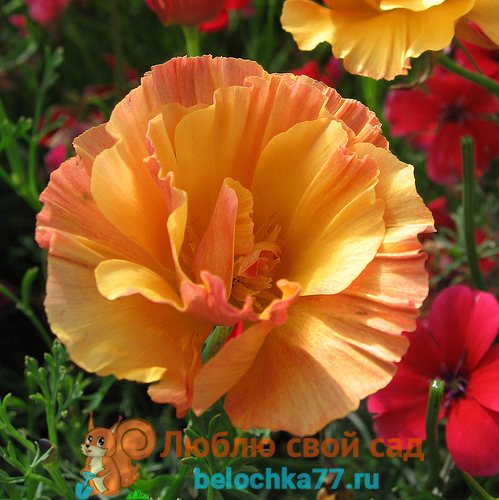

A relatively new variety. Against the background of blue-green leaves and shoots, inflorescences of three shades of orange, gold and pink look especially attractive. Slightly crimped petals form a double flower.
Fruit crash
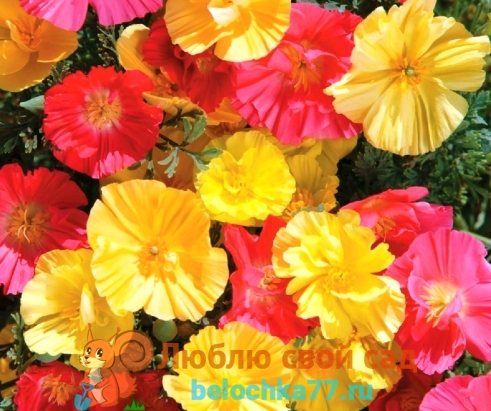

One variety has an incredible mixture of flowers of so different shades of pink, red, burgundy, crimson and even yellow.
Ballerina
California Gold
This plant of the Poppy family was found in the North American west. It happened five centuries ago. Spanish gold prospectors unwittingly turned out to be "botanists" in combination. They moored to the American shores in search of precious metal, because from the sea surface they saw gold on the coast. Rather, 35 miles from the coastline, it was not easy to see the precious metal properly. But they saw the golden glow for sure. And so, not holding back their enthusiasm, the Spaniards landed on a shore full of gold. And they found whole fields of yellow-orange-gold escholzia there.
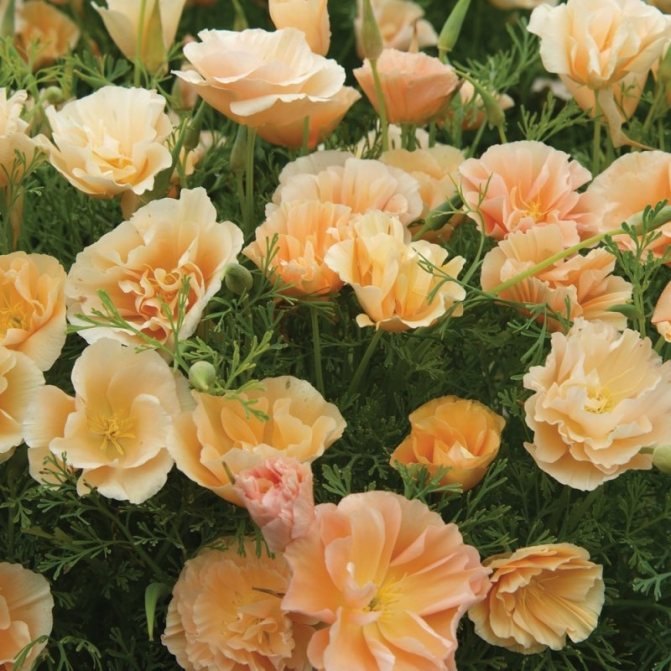

Eshsholzia terry
Since then, ironically about the gullibility of their ancestors, the Spaniards call escholzia "the golden cup".
The flower received its international name in honor of a botanist living in Russia with a German, however, name - Johann Echscholz. He brought a flower from distant California and began to popularize it in Russia. Popularity did not hesitate to come, because the plant had no equal in unassuming. And today, escholzia is one of the favorite plants of flower growers around the globe.
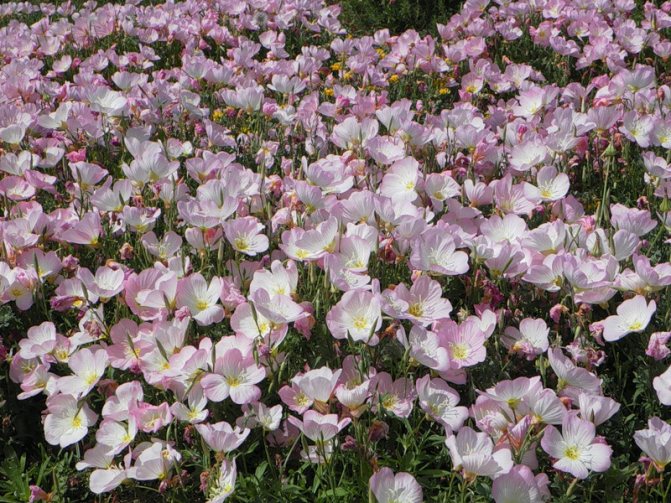

Escholzia in a pale pink shade
Growing escholzia from seeds
When to plant seeds for seedlings
To get flowering plants in early June, they start sowing seeds for seedlings in early March.When choosing a container for sowing, it must be borne in mind that, if it is undemanding to the growing conditions, escholzia reacts very painfully to damage to its root system.
It is necessary to grow Echscholzia seedlings in individual containers or peat tablets. There is another option for growing Californian poppy seedlings - tea bags. It is better to use tea pyramids for sowing. They are stronger than regular double bags. It is convenient to fill them with soil and they will not get wet during growing seedlings. Seedlings can be transferred to the ground along with a bag. Roots will sprout through it. Seedlings grown in such containers bloom 30 days after germination.
Preparation of land and seeds
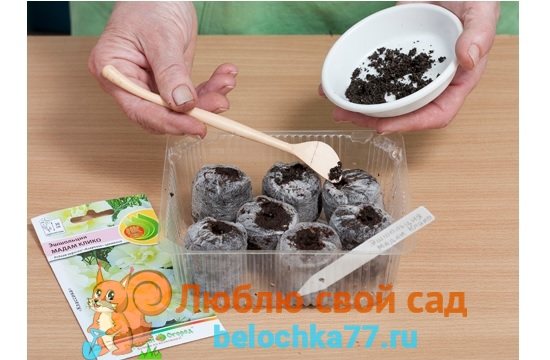

Peat tablets in a shell are pre-soaked in water and wait until they are saturated with moisture.
When sowing seeds in tea bags, soil is poured into them and spilled with water, to which it is useful to add funds containing beneficial soil microorganisms. It can be Baikal EM or Fitosporin. Tablets or sachets are placed in trays where it is easier to keep the substrate moisture.
Sowing and caring for seedlings
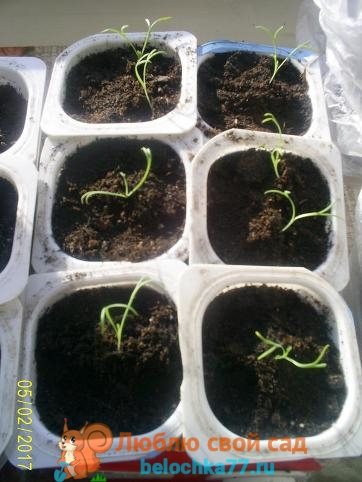

When growing escholzia by sowing seeds, you need to remember about the growth characteristics of this flower. Escholzia has a taproot that goes deep into the soil. When transplanting seedlings, it is very difficult not to damage the root system, and given the painful reaction of the flower to damage to the roots, you need to either grow seedlings in individual containers, or sow seeds directly into the ground.
You can get friendly shoots after stratification: the seeds of the Californian poppy are soaked in water at room temperature for 12 hours.
Then the seeds are mixed with sterilized sand and refrigerated for 48 hours. Cold-treated seeds are sown in individual containers - cups, peat tablets or tea bags.
Soil is poured into the prepared container, and a deepening is made in the tablet. A seed is placed in the soil. This is easier to do with a toothpick or fine tweezers. You can put 2 seeds in each sowing container. A layer of soil no thicker than 1mm is poured on top. Crops are moistened with warm water. The container with crops is hermetically covered with glass or cling film. Before emergence, the container is placed where it is warm and light enough.
Crop care is reduced to timely soil moisture and airing.
The emerging seedlings gradually adapt to the less humid atmosphere of the room. Installation of additional lighting is possible.
The sprouts are watered, avoiding waterlogging of the soil. After two weeks, the seedlings can be fertilized with a special fertilizer for seedlings.
Seedling hardening
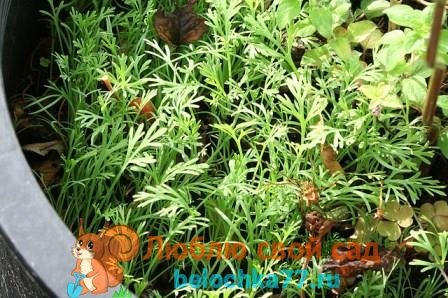

Seedlings grown in room conditions must be hardened before planting in a flower garden. It is better to do this gradually over several times. First, 20 days before planting the seedlings in a permanent place, the container with the seedlings is transferred to a cooler place.
After 3-5 days, on a sunny day, the seedlings are taken out into the street, for 2-3 hours and again returned to the room. A few days before transplanting seedlings to a permanent place, the plants begin to be left outside, all day, bringing it indoors only at night.
Seedlings adapted to open air conditions can survive in frosts down to -5C.
Wormwood is unpretentious to soils, but it blooms and develops better on loose, dry sandy or sandy loam soils. The main condition is that there should be no stagnant water on the site. Good aeration is very important for the root system. The place should be well lit by the sun. The plant does not tolerate acidic soils, filled with fresh manure and with stagnant moisture.
Celosia - growing and care, when to plant
UNDER THE SUN AND THE ROOF
By the way, the California poppy is suitable not only for a flower garden in the country, but also for landscaping balconies and loggias. And all because this plant is very hardy.You just need to prepare a flower box on the balcony, fill it with light, loose and sufficiently moisture-absorbing soil (and this can be achieved by mixing garden soil, peat, perlite or river sand) - and it's done! And as soon as the plants get stronger, care for them is normal - you need to water on time and in moderation, remove wilted corollas, do top dressing, but the dose should be half that for similar plants in a flower bed.
Esholzia is a sunny poppy. Features. Growing.
Planting escholzia in open ground
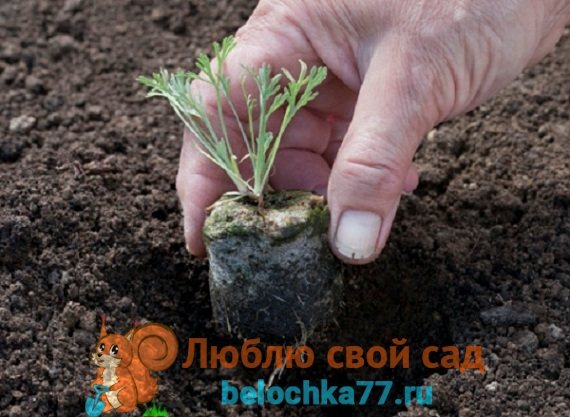

Even the seedlings hardened before planting in open ground can be taken out only when the night frosts stop.
The selected area is dug up, the roots of perennial weeds are carefully selected, the holes are leveled and prepared. At least 30 cm should remain between neighboring plants. In such conditions, the escholzia will bush well and bloom for a long time.
Prepared wells are spilled with water. To improve survival rate, you can add Epin, Zircon or Energen to the irrigation water. Seedlings are lowered into the recess along with tablets or tea bags. When growing seedlings in cups, the plants are removed without damaging the clod of earth. Planting is watered again and sprinkled with a layer of dry earth.
Godezia
Godetia is very beautiful, not a flower, but a holiday! Frost is not afraid at all. Grows well on loamy soils, but requires regular watering.
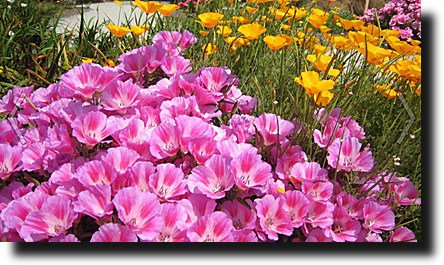

In dry summers, it blooms quickly, so you need to monitor soil moisture. To prolong flowering, I pinch off dry ovaries and treat the godetia with natural insecticides. I use ash and tobacco dust against the cruciferous flea.
Sowing directly into open ground
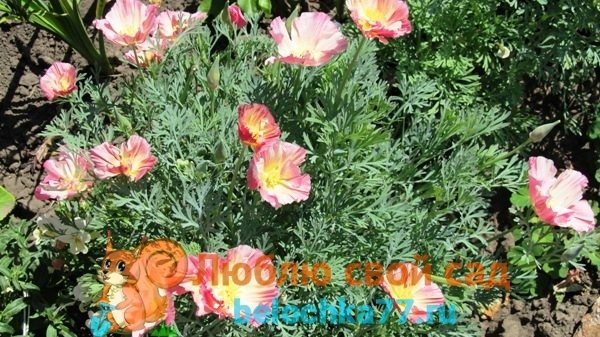

Under certain conditions, it is possible to sow seeds in open ground. This can be done both in spring and autumn.
Seeds intended for sowing in spring should be stored in the refrigerator on the bottom shelf. During storage, a kind of seed stratification occurs, which improves germination. In April, we prepare a plot for sowing, taking into account the needs of the plant in soil, lighting and moisture. With later sowing, there is a risk that the seedlings may die from the ensuing heat. Seeds prepared for sowing can be mixed with sand to simplify sowing.
Spring shoots appear 10-12 days after reaching the outdoor temperature of 15-18 degrees Celsius. The sprouts are thinned to 15-20 cm between flowers.
When several true leaves are formed on the seedlings, thinning is carried out - weak shoots are removed. Escholzia of spring planting blooms in early June.
Fragrant tobacco - grown from seeds
How to plant Escholzia with seeds?
Due to the peculiarities of the root system of the Escholzia flower, it is planted only with seeds. You can sow them in open ground in spring or autumn. The practice of growing escholzia seedlings is common only among experienced florists who use ready-made sprouts to compose decorative floral ornaments. The process of growing Echscholzia seedlings from seeds is laborious, its algorithm is approximately as follows:
- initially, the seeds must be soaked and treated with growth stimulants and fungicides;
- then put the tableted peat pots in a container with water;
- then the tablets must be removed from the water and two seeds must be placed in each;
- after that, the seeds must be sprinkled with peat and sprinkled with water;
- put the finished tablets in a dry container, which is closed with a film or glass;
- place the container in a cool, well-lit place;
- as needed, the tablets need to be watered, only in moderation, since the escholzia will not tolerate an excess of moisture;
- after about two weeks, seedlings will begin to germinate in tablets, after which the container must be opened;
- at this stage, you can start hardening the seedlings, for this, the seedlings should be periodically taken out in a cold place where the temperature drops to -5 ° C;
- when planting, the seedling is transferred into the hole along with a peat tablet;
- preliminary preparation is also required by the land in the flowerbed, where the seedlings of the Escholzia will be planted. Three weeks before planting, the site must be dug up; just before moving, holes should be made at a distance of 30 cm from each other.
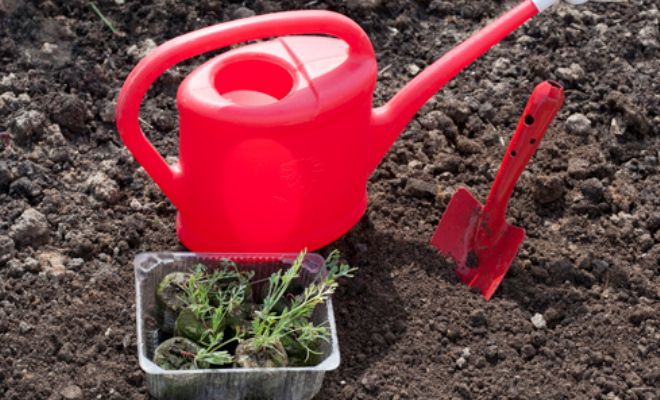

When to plant Escholzia outdoors?
Growing an Escholzia flower from seeds on unprotected soil, due to the unpretentiousness and unpretentiousness of the plant, is considered the best option for novice florists. Sowing escholzia in open ground can be done under the first snow and covered with a thick layer of leaves, you can plant it in spring - in April. For flowers, it is better to choose areas unprotected from sunlight, with sandy crumbly soil, weak in acidity. Before planting, the soil must be dug up and furrows made. Seeds are best sown together with sand.
Before planting, you need to make a preliminary preparation of the Escholtia seeds themselves. The planting material collected in the fall should be stored in refrigerators, so it undergoes natural stratification. Strong, hardened seedlings can be obtained in the spring by sowing seeds in the fall. But, it is worth remembering that Escholzia can not stand too cold winter, therefore crops must be carefully mulched with fallen leaves.
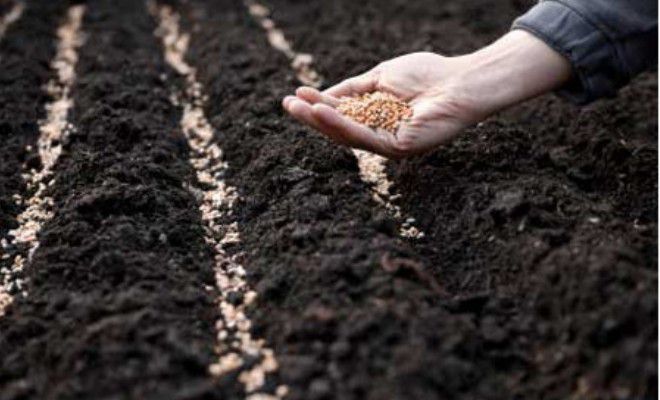

Sowing before winter
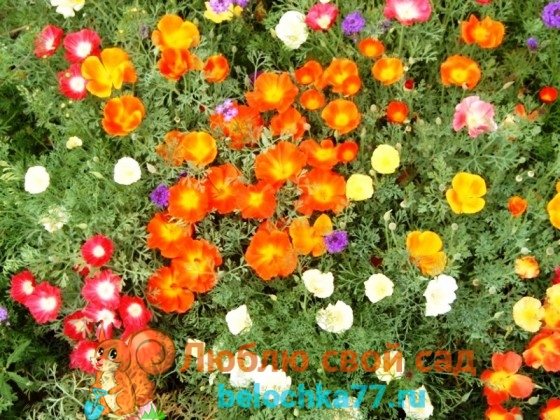

Seeds sown in the fall into the ground undergo natural stratification until spring, improving germination. Sleepy flower, sown in autumn, blooms in early May.
Sowing seeds in the fall begins shortly before frost, in mid-October. When planting, seeds are spread over the soil surface and sprinkled with mulch.
The dark seeds of aescholzia are spread over the surface of the snow, and covered with dry leaves on top. Then everything is as usual. When 5 true leaves appear in the spring, we thin out the crops to 20 cm between the plants.
Alissium
A very fragrant and picky flower that spreads over the soil. Loves the sun. I sow when the soil is still wet, but does not stick to my hands, but crumbles. Large seeds are easy to sow one at a time, but sometimes you have to thin out.
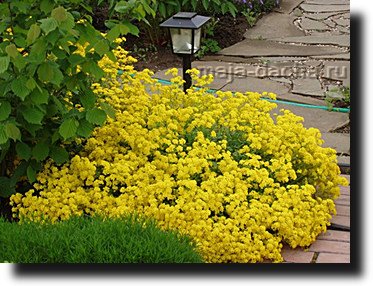

Alyssum blooms until mid-summer, exuding a honey scent. Then I cut it off, leaving 5-6 cm, and re-flowering lasts until frost.
Summer flower care
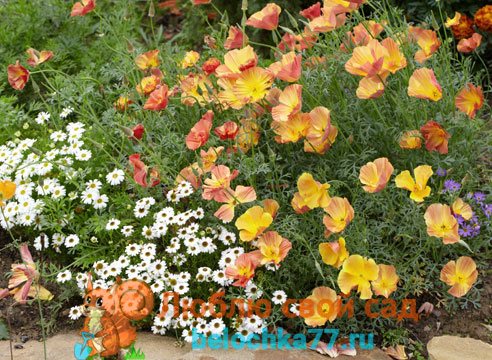

The unpretentious Californian poppy flower does not require much attention to itself at first. And when the flowers begin to bloom, it will be difficult to take your eyes off him.
All activities for the care of this flower can be reduced to a few simple points:
- Choose the right place.
- Timely watering. It is better to moisten the soil in the evening with a little water.
- Fertilization. Eschsholzia will be very grateful for the mineral feeding. It will be especially useful before flowering.
- Weeding and loosening the soil.
- Protection from pests and diseases.
- Pruning and removing wilted flowers. Timely removal of wilted flowers and shortening of the shoots will increase the number of buds that have appeared and save the plant strength for further flowering.
- Flowers can grow in the same place for a long time. In subsequent years, the wormwood will reproduce by self-seeding.
What the legends say
Many legends are dedicated to this delicate plant. One of them says that in the 16th century a ship with gold miners landed on the shores of North America. Back on the coast, treasure hunters noticed a bright golden glow. This amazing, mesmerizing light came from the delicate and quivering flowers of the escholzia. In Spain, the plant is still called the golden bowl. However, the homeland of flowers is sunny California, where more than ten species of plants belonging to the poppy family grow.
But, despite its American origin, the flower was first described by members of the Russian expedition, equipped to the New World at the beginning of the 19th century. The plant itself was named after the Russian biologist Eshsholz, who first brought flower seeds to Russia.
And they have not disappointed flower growers to this day, delighting with a bright color from the beginning of June almost until winter. And what is interesting, each flower that appears surprises for 3-4 days, and then fades, but instead of it new buds bloom. At the same time, the escholzia is like playing hide and seek with us. If it's sunny, it flaunts, demonstrating the charm of the opened buds, but as soon as it becomes cloudy or the evening comes, the plant tightly closes its petals.
Escholzia partners in the flowerbed
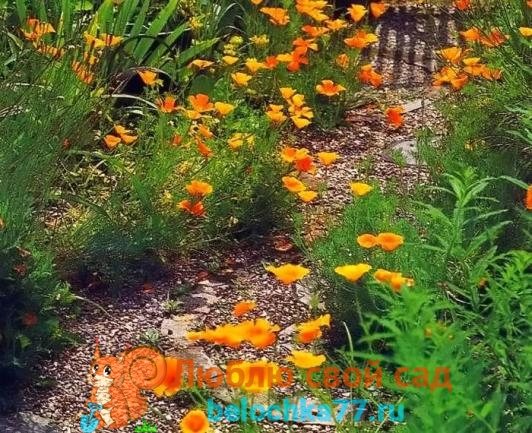

The discreet, non-aggressive nature of the California poppy allows it to peacefully coexist with other flowers and create attractive compositions. Escholzia looks good against the background of cereals.
An attractive combination of a sleepy flower with mattiola, carnation, iberis, purslane, lobelia.
Escholzia clumps are planted on alpine slides, flower beds, and lawns. The multi-colored poppy looks harmoniously against the background of thuja, juniper, boxwood.
Mattiola - growing from seed
Nasturtium
A small nasturtium looks good in front of a flower garden. The climbing frame can be run over the support for vertical gardening. But she herself cannot climb, she must tie up.
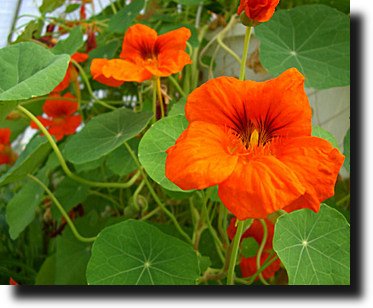

Nasturtium does not tolerate frost. I plant 2-3 seeds in the nest at the end of May and admire the flowering until the first cold weather. And the roots of nasturtium attract earthworms, which loosen and enrich the soil of the front garden.
Diseases and pests
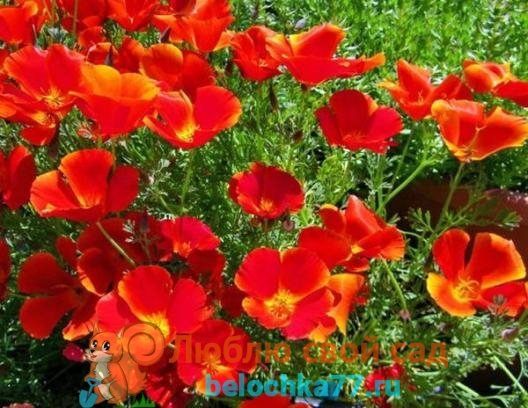

Eschsholzia is rarely damaged by diseases and pests, it is not to your taste.
What causes harmful insects or diseases?
- With prolonged drought, a spider mite may appear on the plant. With the appearance of this pest, growth stops, there is no flowering. Any broad-spectrum insecticide is suitable for pest control. Timely watering and spraying of plantings with water will help to reduce the number.
- Weakened seedlings can be damaged by bean aphids. Fight with any insecticide.
- Excess moisture leads to the appearance of rot on the plant. Remove damaged parts, reduce watering.
- From roses, escholzia can become infected with powdery mildew. The disease is fought with a solution of soda, infusion of ash or milk whey. For prophylaxis, all plants growing nearby are sprayed.
Description and features
It is a herbaceous perennial shrub with a rod-shaped root. Shoots are thin and numerous. Flowers resemble poppies, color from yellow to red and their shades, simple or double, depending on the variety.


Bloom from summer to winter. However, one bud lives only a few days, it is replaced by a larger number, an approximate coefficient of 1/2. The visiting card of this plant is not only delicate flowers, but also a white, bluish bloom on the stems and leaves.
How to collect your seeds
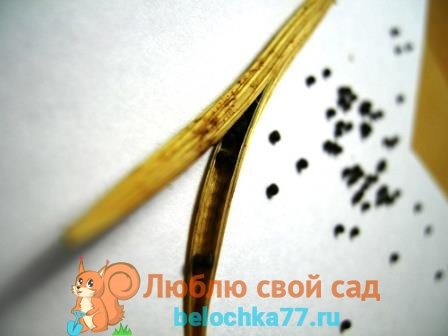

Californian poppy seeds are only harvested to be sown elsewhere or shared with someone. To collect your seeds, you need to put gauze bags on several wilted flowers. Dried seed pods are cut, the seeds are poured onto paper and dried. The dried seeds are stored in paper bags in the refrigerator. The harvested seeds are able to germinate within three years after harvest.
Choosing a landing site
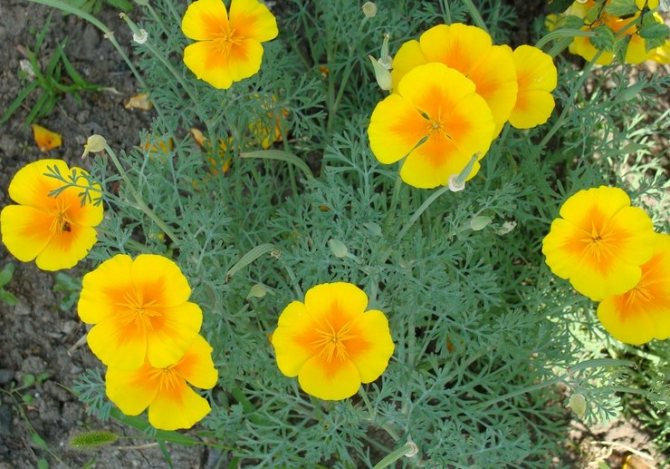

Escholzia prefers to grow in a sunny area, with abundant and long-term illumination throughout the day, without strong gusts of wind. The soil on the site must be breathable, without stagnant water, it can consist of sand or a mixture of earth with a high content of sand. This is very important for the full development of the root system of the Californian poppy, and therefore for the entire plant as a whole. Heavy clay soil, shady area and excess moisture in the soil will only have a negative impact on the crop and will not bring the expected results from planting flowers.
Useful properties of escholzia
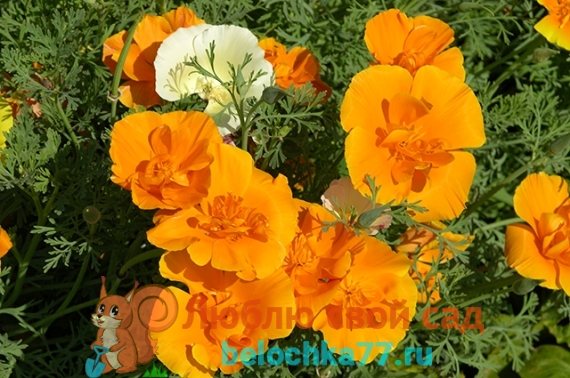

In addition to its decorative qualities, the escholzia plant is used for medicinal purposes.
The American Indians used all parts of the plant to treat toothaches, and used a decoction of flowers to kill lice.
American pediatricians use this plant as a gentle sedative and pain reliever.
The French add escholzia to a sedative potion.
The plant looks very similar to poppy, it is often used as a hypnotic, sedative and pain reliever.
Means are prepared in the form of infusions, decoctions, teas.
Description
Eschscholzia (lat. Eschscholzia) is a genus of annual and perennial plants from the Poppy family. The genus has a dozen different species, native to North America. Plants are low - 20-60 cm, the color of flowers is most often red and orange, but there are also white, lemon, yellow, pink flowers. The bushes are very lush due to the branchiness of the stems.
Escholzia is used for flower beds, alpine slides, flower beds, can be grown on the balcony in boxes. This is a shear plant, therefore it can be used in vases in the interior. Eschsholzia reproduces abundantly by self-seeding, therefore many people confuse annuals with perennials. In horticulture, the flower is planted for one season.


Eschsholzia in the wild.
Popular varieties
Apricot chiffon
The perennial escholzia bushes are covered with flowers of a creamy apricot hue. They grow up to a height of 35-40 centimeters. The flowers of this variety are double with corrugated petals.
Golden glory
Large, simple yellow flowers with an orange center.
Orange king
Has bright orange inflorescences. The diameter of the flower is 5-8 centimeters. It blooms from June to October.
Mikado
This variety belongs to the Californian escholzia. It has bright yellow flowers with an orange center 7 centimeters in diameter.
Karminkoenig
Simple flowers are dark carmine in color.
Strawberry fields
This variety has semi-double flowers, scarlet with a yellowish middle.
Fruit explosion
The name of the colors comes from the combination of bright, saturated colors of yellow and crimson, in their shape they can be wide and folded.
Apple tree flowers
The varietal species is distinguished by the increased color of large inflorescences. Their color is pink, but they have a bright shade at the edges, and pale in the middle.
Ballerina
In the perennial escholzia, double bright flowers have a diameter of 15 centimeters. They can be yellow, pink or orange in color. Leaves, cut three times, have a waxy coating.
This plant is beautiful and there are no special difficulties when growing it. For these and other reasons, the delicate and delicate flowers of Escholzia attract many people.
I fell in love with the incredibly gentle eschscholtsia at first sight for a long time, about 5 years ago. And since then, her beautiful, exquisite flowers adorn my flower beds every year.
You can only contemplate the beauty of Escholzia flowers on a sunny day.
Each flower of Escholzia lives only 3 days, but there are incredibly many of them on the bush. It is the abundance of bright flowers that makes the plant very elegant. Only one thing upsets me - you can contemplate the beauty of these amazing butterfly flowers only during the day, and even then only in sunny weather.
Escholzia flowers only open on sunny days
Eschsholzia is an amazingly beautiful plant that came to Europe from North America: back in 1795, the Scottish botanist and surgeon Archibald Menzis brought the seeds he collected. To our great regret, they did not germinate, and the plant remained unexplored. It was only in the fall of 1816 that the Russian expedition, led by the young lieutenant Otto Evstafievich Kotzebue, visited the San Francisco Bay, where the naturalist Johann Friedrich von Echscholz collected and brought to Europe the seeds of the Eschscholzia. As you probably already guessed, it was in honor of him that the plant got its name.
Eschscholzia got its name in honor of the naturalist Johann Friedrich von Eschsholz. Photo from the site
Spectacular openwork leaves of aescholzia, gray from a wax bloom, are a bit like wormwood leaves, therefore, the people call it not otherwise than "wormwood", but at home, in the USA, - "Californian poppy".
Eshsholzia turfy
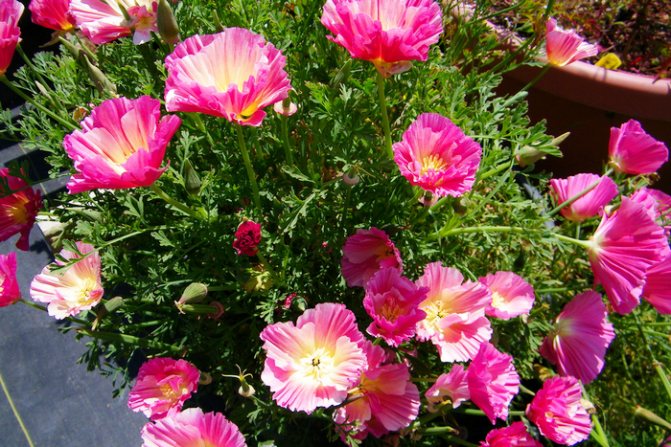

Small in size, it reaches about 15 cm in height, just like the Californian, it is characterized by pinnately-divided, blue-green leaves. During the summer, it decorates flower beds with yellow flowers with a diameter of more than 2 cm.
Californian escholzia varieties
- "Red Chief" is a beautiful variety with dark red inflorescences.
- "White Linen" creamy white inflorescences.
- "Ballerina" is a series of plants of different colors, characterized by double and full inflorescences.
- "Mandarin" orange flowers.
- "Bush Apricot" apricot-colored inflorescences.
- "Scarlet Glow" variety with full reddish flowers.
- "Bush Orange" orange flowers.
- "Bush Pink" pink flowers.
- "Bush Rose" inflorescences of carmine-pink color, terry.
- Cherry Ripe impresses with its full colors.
Escholzia Lobb varieties
- "Sunbeam" yellow inflorescences.
- "Sundew" creamy yellow inflorescences.
Care during growth
The flower is ideal for novice summer residents. It requires little attention and pleases with an excellent result.
You need to feed the plant once before flowering. You can use any mineral fertilizers for flowering plants.
Escholzia should be watered in the evening when the flowers are closed. It tolerates short periods of drought well, but in this case there will be fewer flowers. You can water with a hose, spraying water over the plant. Watering should not be very abundant.
For constant flowering, it is necessary to remove the fading flowers and seed pods. More and more flowers will appear in their place. The Escholzia flower only lives for three days. But, thanks to the number of buds, the bushes are always beautiful.
Maintenance and care
All types and varieties of escholzia are completely undemanding and unpretentious to care and maintenance. The California poppy is the perfect flower for beginners and busy growers. The maintenance rules are very simple and consist in moderate, periodic watering, removing various forbs, loosening the soil, especially after rains and watering, so that it allows air to pass through better.
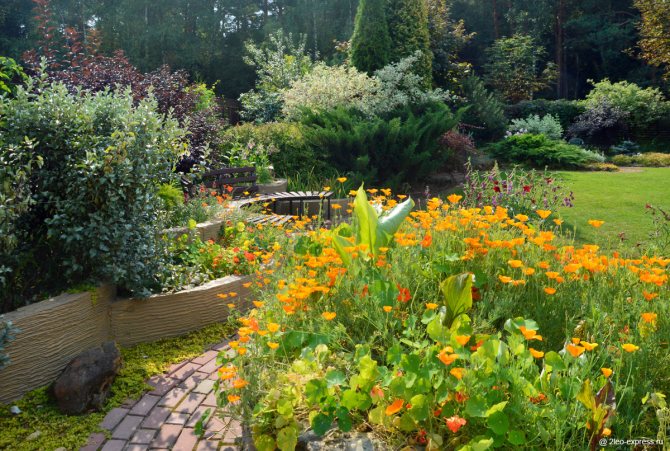

Seat selection
When planning a flower garden, a place for an escholzia should be chosen more carefully. The flower does not like transplants very much, which is why the plant is immediately planted in a permanent place.
Poppy is not at all picky about the mechanical composition of the soil, it grows well in dry sandy soil. The only thing is that the Californian poppy does not tolerate acidic, clayey, moist soils.
The plant is drought-resistant, it tolerates a lack of water more easily than excessive waterlogging of the soil.
The area for the flower bed should be in an open, well-lit place, a slight partial shade is allowed. Prolonged stay of the flower in the shade can greatly affect the decorative qualities of the plant.
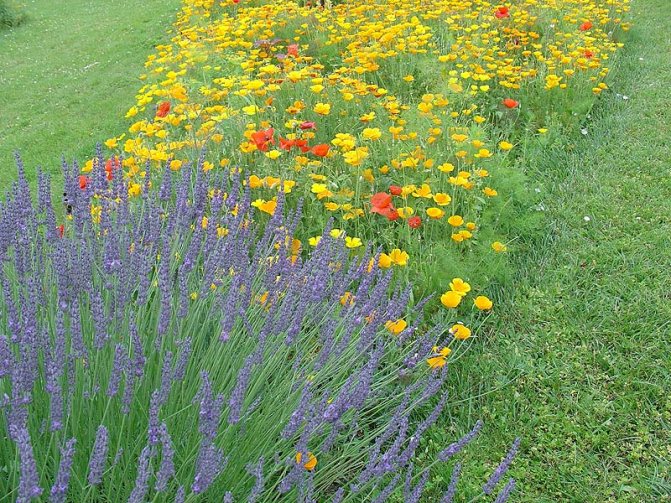

Soil preparation
The plot of land is well dug up, stones, roots of various plants are removed, fertilizers are applied. If necessary, create a good drainage layer.
Watering
The plant is drought-resistant. Thanks to the powerful taproot, the flower receives moisture, in the absence of watering and prolonged dry weather. In most cases, enough water is brought in by precipitation. If the weather is hot, dry for a long time, the dry soil is watered moderately.
Do not forget that it is extremely dangerous to flood a flower.
With a prolonged stay of the root system in moist soil, the roots can begin to rot, which in turn will lead to the death of the plant. In principle, for active growth and lush flowering, it is enough to moisten the topsoil with water. To exclude sunburn and rapid evaporation of moisture, the plant is watered in the evening, when the sun decreases its activity and all the flowers have already closed. Abundant watering is needed only during flowering.


Top dressing
Escholzia is able to grow and bloom without additional fertilizing.However, for active, lush growth, the formation of larger and brighter flowers, escholzia is fed with any mineral fertilizers for garden flowering plants. It is impossible to fertilize a flower with organic matter in its pure form. Top dressing is applied before sowing and in spring, before bud formation.
Temperature
The flower is very thermophilic, the natural growing environment is warm, arid areas of the southern and western regions of North America. Comfortable growing temperature 25 ... 35 degrees. The bush is able to withstand a short-term drop in temperature to 0 ... -5 degrees.
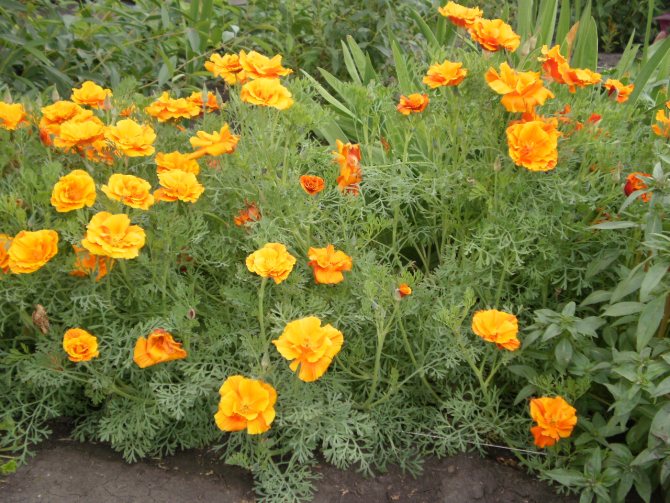

Transfer
The plant reacts extremely painfully to all kinds of transplants. All because of the powerful taproot, which very rarely can be completely removed from the ground. They resort to flower transplantation in extreme cases, when the plant is threatened with death. If you can do without moving it from place to place, then it is better not to do this. The transplantation procedure can greatly affect the decorative appearance of the plant. The flower will need a lot of effort and time to recover, as a result, the bush after transplantation may not bloom at all.
Pruning
On escholzia, it is advisable to cut off old shoots and seed bolls. Withered flowers are removed for two reasons, firstly, so as not to spoil the decorative appearance of the bush, and secondly, the pruning procedure contributes to more lush and longer flowering. The seed pods are cut to prevent uncontrolled self seeding.
Wintering
Californian Eschsholzia is thermophilic, it tolerates temperatures up to -5 degrees. Therefore, it does not overwinter in the middle lane. For this reason, in most of the Russian Federation, it is grown as an annual plant.
Escholzia features
Escholzia is a herbaceous bushy perennial plant, the height of which can reach up to 0.4 m. It is cultivated as an annual flower. Taproot. There are a large number of thin stems. Openwork leaf plates are deeply dissected, they are colored green-gray and have long petioles. Single cupped flowers reach 8 centimeters in diameter. Flowers can be double or simple, while outwardly they are similar to poppies. Their color can be yellow, red, white, orange, and they are also painted in various shades of these colors. Such flowers have one feature, the fact is that on a cloudy, rainy, windy or cold day, as well as at night, they close. The fruit is a capsule, the size of which varies from 3 to 9 centimeters.
Content
- Listen to the article
- Description
- Growing escholzia from seeds Sowing
- Seedling care
- When to plant
- How to grow
- How and when to collect seeds
- Eschscholzia lobbi
Soil preparation
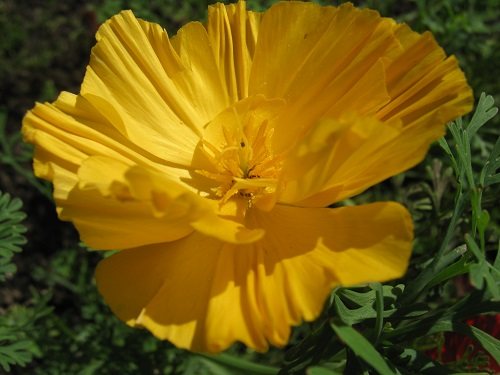

It is important to provide the Echscholzia with optimal soil conditions. It is ideal to test the acidity, but the ideal is often unrealistic.
Therefore, take a closer look at the fact that there from the weeds itself settles. If plantain, wood lice, knotweed - the soil is sour and dense for our candidate for sowing.
Improving conditions is not that difficult. Digging with ash (possibly adding sand) will reduce acidity and make the soil lighter.
You will feel it already when harrowing and cutting furrows - the soil has become lighter.
It is necessary to dig up the future planting site in advance, not just before sowing. A pause of a couple of weeks will allow the soil to settle gently to optimum density.
This is important, otherwise small seeds can simply fall into the voids between the soil fragments. Then they will not be able to ascend.
Remember: the flower is long-blooming, which means that the consumption of nutrients is high.
While preparing the soil, it is good to add a little basic fertilizer (NPK), but you don't need to overdo it. Escholzia does not like overfeeding.
Do not overdo it with nitrogen, it can even destroy the plant.
Selection of seeds and varieties for the Moscow region
Escholzia seeds are very small, so it will be enough to buy one bag of each variety. They do not lose germination for three years.
Having sown these flowers once, there is no need to buy seeds, only if the grower does not want to start new varieties. When the seeds ripen, they spill out onto the ground and sprout beautifully in the spring. The main thing is to thin out the seedlings in time so that they do not drown out each other.
In the Moscow region, the most common and popular are the following varieties: Californian, turf and Apple blossom.
There are a huge variety of varieties that delight the eye with a variety of shades of colors and shapes. The flowerbed, with the eschscholtia growing on it, resembles a multitude of butterflies, which simultaneously descended in the garden to rest.
Growing seedlings
With the seedling method of breeding, an important condition is to prevent injury to the root system during transplanting seedlings into open ground. This must be taken into account already at the stage of sowing seeds. Therefore, it is advisable to use peat tablets, collapsible or disposable cups in order to plant the plant together with the ground in the future. Otherwise, there is a high probability of the death of the seedling.
Otherwise, growing Escholzia seedlings is no different from growing other plants. For this you need:
- Disinfect the seeds with a solution of potassium permanganate or fungicides, and also treat them with growth stimulants to improve germination.
- Place the peat tablets in a large plastic container and pour water into it.
- After the tablets have absorbed all the water and swell, the remaining water must be drained.
- Using a damp toothpick, place one or two Escholzia seeds in each peat tablet.
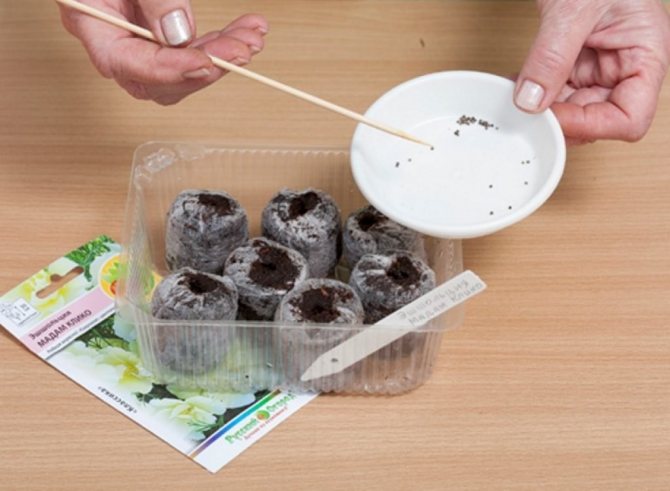

- Sprinkle with a millimeter layer of sifted peat.
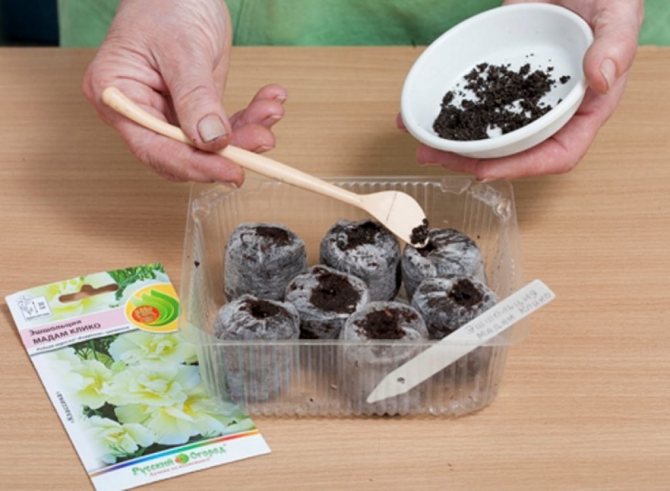

- Moisten the soil from above with a spray bottle.
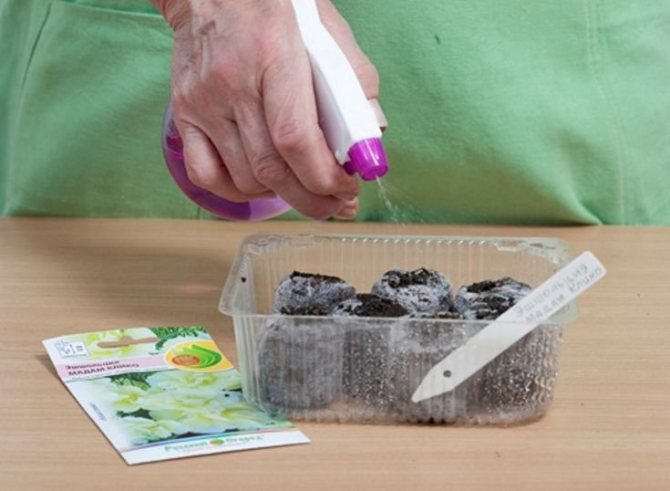

- Cover the container with cling film or glass and place in a warm, bright place, hidden from direct sunlight.
Before the first shoots appear, the container must be ventilated and moistened in time, preventing the soil from drying out. The seeds will sprout within two weeks. And after another 20 days, you can apply a complex fertilizer in a weak concentration to feed the sprouts.
2-3 weeks before planting seedlings in an open area, you need to carry out a hardening procedure. At first, you can leave the seedlings under an open window for a few minutes. In the future, it needs to be taken out to the balcony, gradually increasing the time spent in the fresh air from 30 minutes to 4 hours.
Hello dear readers!
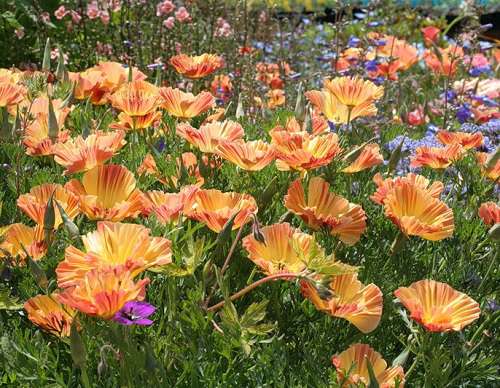

Until recently, I did not plant an escholzia on my site. And even now I don’t understand why.
But two years ago, looking through the next catalog of flower seeds, I unexpectedly saw (as if the veil had fallen from my eyes) escholzia.
And from that time on, I can no longer imagine my garden without eschsholzia - a sunny flower that revives everything around.
When the escholzia blooms, many little suns are lit in the summer cottage, fabulously transforming it.
A person perceives the main flow of information through sight. It is important that this basis is mostly filled with positive.
Therefore, we take in the field of view our unpretentious, pleasing to the eye flower: escholzia.
A relative of poppy (poppy family), delicate and varied in shades of flowers, escholzia came from afar.
The birthplace of the flower is the northwest of America. It is named after the Russian scientist Eshsholts, who discovered the flower in the 7th century.
The nuances of growing
Growing an escholzia is a fascinating process and, to the delight of gardeners, is absolutely not difficult.This warm and light-loving plant is able to endure not only prolonged drought, but also light autumn frosts. It is also appreciated for its long flowering, lasting from June to early autumn. The fruits are small pods shaped like pods.
Escholzia can be grown on almost any soil.
Escholzia can be grown on almost any (even sandy) soils with good drainage properties. But do not plant the plant on sour, fresh manure or very damp manure, otherwise it will die.
Healing properties
This plant is known for its medicinal properties. The juice contains:
To obtain, the aerial part of the plant is used. It is cut during the flowering period, then dried.
Dyes are used to create cosmetics. Alkaloids can be used for medicinal purposes. They are used as sedatives for pain relief. Alkaloids have an antispasmodic effect.
From this plant, gelatin tablets, liquid extracts, and alcohol settings are prepared.
The use of perennial escholtia as a medicine is recognized in traditional medicine. It is known that lotions with this remedy can help with toothache. Eschsholzia perennial can be used to combat insomnia. It is prescribed for children as a remedy for enuresis.
There are contraindications for the use of medicines made from this plant. It is not recommended to take them:
- pregnant women;
- nursing mothers;
- for those who have a long-term allergy to eschscholtia.
Children are advised to use these medications only as directed by a doctor. If the activity requires an increased concentration of attention, the use of a product based on this plant should be limited.
When to plant escholzia
It is necessary to plant escholzia in dry, sandy soil with a good drainage layer. The reaction should be neutral or slightly acidic. If the soil in your area is too acidic, then you should dig it with a full bayonet of a shovel and put dolomite flour at this depth at the rate of 200 grams per square meter. Flour can be replaced with ash. For one square meter of the site, you will need two glasses of ash. You can plant seedlings from late April to mid-May. This is the period when frosts no longer appear at night, but the earth is not yet fully warmed up.
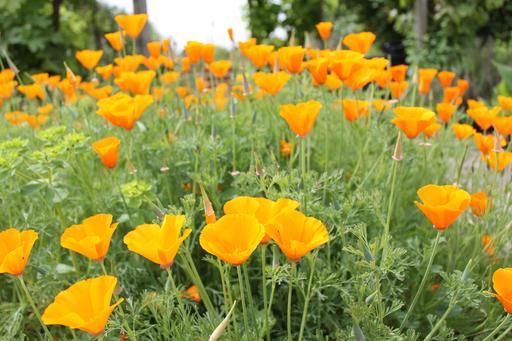

Seed collection
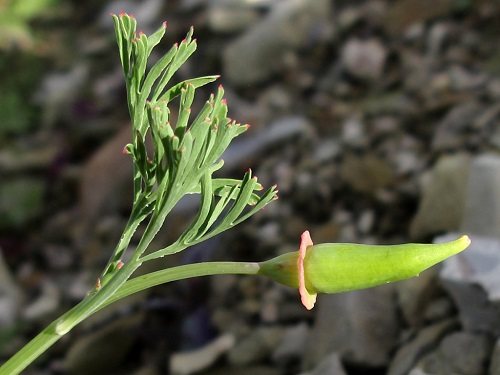

Don't forget to leave seed plants. They will not be abundantly strewn with flowers, but they will provide you with seed for the next season.
Whether to let your garden joy seed itself or to collect the seeds is up to you.
If you want to move the flower bed to another place or grow different varieties and want to get clean material, not to be confused with another, do this:
- After flowering, put a loose gauze bag on the escholzia bush with tying bolls. Or just tie a piece of gauze around the bush. This will prevent shedding of seeds.
- After a month, the boxes will dry out, the seeds in them will ripen.
- Cut the bush along with the seeds, carefully remove it on newspaper or cloth. Something will wake up on the bedding, some of the boxes will not be opened. Wrap the ripe pods, shell them on a cloth or suitable dish. Eshsholzia gives seeds abundantly, they ripen together.
- After selecting all the seeds, dry them.
- Pack the amount of seeds required for sowing next year in a paper bag, place them in the refrigerator for the winter (not in the freezer). Until spring, they will undergo training - stratification.
- Store the rest of the seeds dry, as usual, not in the refrigerator, in sachets. They will be viable for three years.
- When planning your next seeding, remember to stratify. Sow in the fall or overcook the seeds over the winter - in the refrigerator.
Growing secrets
Despite the fact that the flowers are unpretentious, there are still several secrets of growing Escholzia from seeds, which every florist needs to know about:
- Before planting, the seeds of the California poppy must be subjected to mandatory stratification;
- You can sow seeds in the fall, which is called "before winter". Thus, the seeds will undergo natural, that is, natural, stratification. But you can plant flowers in early spring, or grow by seedling.
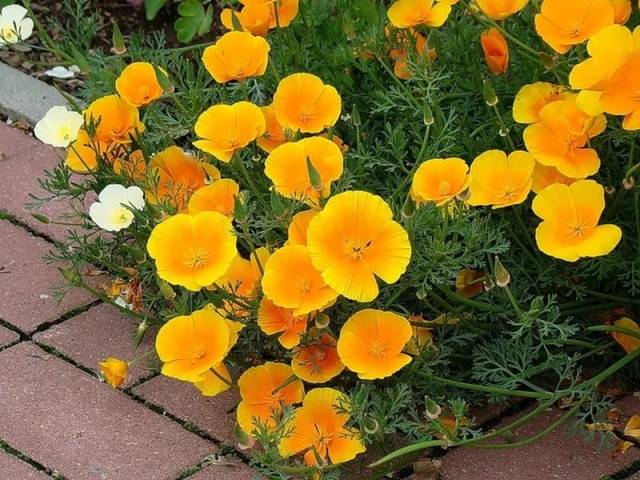

- The root system of flowers is very fragile. Therefore, when growing seedlings, the picking process is excluded.
- Flowers react very painfully to excess moisture. The roots begin to rot and the plant may die.
- The area for Escholzia should be sunny.
In general, it will not be difficult to grow Eschsholzia. And even a novice florist can cope with this.
Interesting! Escholzia got its name "Wormwood" for the similarity of openwork leaves with wormwood foliage.
Harmful insects and disease
Florists appreciate the escholzia's resistance to all sorts of diseases. Most often, the plant can be affected by root rot. Excessively moist soil near the flower can lead to a similar disease. An outwardly withered flower is a sure sign of root system disease. Watering the inflorescences does not change the situation. In this case, summer residents need to dig up the "problem" shrub in order to examine the root system.
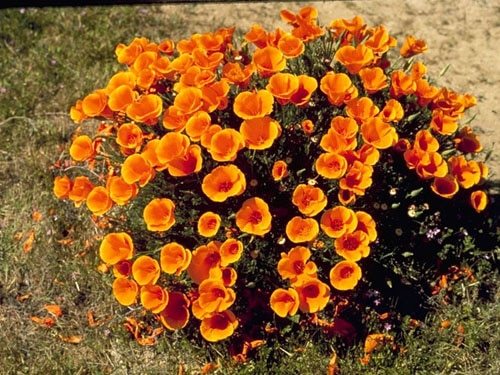

If, upon closer analysis, a gray coating is visible and rot spots are noticeable on a part of the escholzia, then the problem is proven. Bushes with a disease are removed from the site, because the disease can subsequently spread to healthy representatives of vegetation in the flower bed. Watering is stopped for a certain time.
The soil is treated with fungicides:
- copper sulfate;
- rovral;
- Bordeaux mixture.
Subsequently, watering is carried out infrequently in order to avoid a similar problem with waterlogged soil.
In the dry summer period, the vegetation is affected by the spider mite. A clear sign of the presence of a disease in vegetation is a cobweb. The cobweb envelops the flower, covering it entirely. Small spiders are noticed on the leaves of plants. Spider and suck the juices from the flower. Delayed assistance to the escholzia leads to the complete drying of the inflorescence.
In such a case, the following drugs should be preferred:
- spark;
- actellik;
- face.
The drugs will help fight harmful insects and heal the flower.
A place
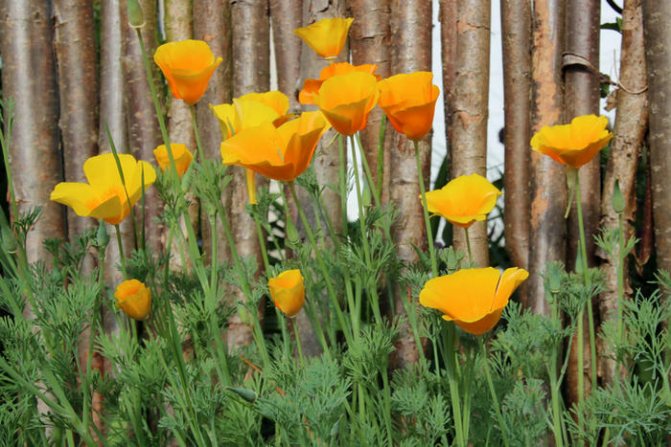

Escholzia requires sunny places, blooms profusely in sunny places. It should be remembered that the inflorescences open from 10.00-16.00, on cloudy days you can forget about the beautifully blooming poppy. Then the inflorescences are closed.
The inflorescences open when the sun is shining.
Of course, this is a minus, since in a rainy summer, you can forget about the flowering of these plants.
It has no special requirements for the soil, it is important that the soil is permeable, sandy, light and fairly dry.
Eschsholzia
Eschsholzia attracts bees, and the unusual shape of the leaves resembles wormwood, for which it is sometimes called wormwood.
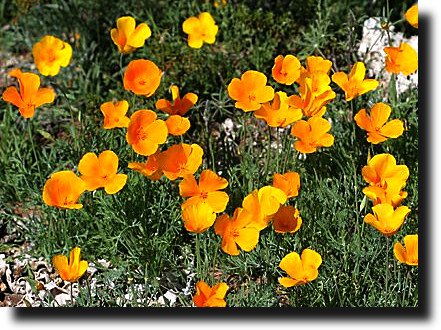

She is very fond of the sun, so that the flowers even close in its absence. After the first year, it does not require re-sowing, multiplying by seeds on its own. And if the wilted flowers are not cut off, then in the fall the very first self-seeding will bloom!
If you alternate planting annuals and experiment with varieties, then they can never get bored. It is not difficult to take care of them, therefore, for flower growers who come to the dacha infrequently, this is an excellent choice. They will help even when you have not yet managed to lay a permanent front garden, but you still want blooming beauty. I sow fast growing flowers even among perennials, and my beds bloom all season.
Olga POLUSHKINA

